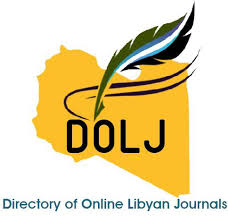SGLT2 inhibitor: metabolic effect on Libyan patients with T2DM at National Diabetes Center in Tripoli
DOI:
https://doi.org/10.54361/ljmr.v14i1.03Keywords:
Type 2 diabetes mellitus, sodium glucose co-transporter-2 inhibitor, Empagliflozin, cardiovascular disease, chronic kidney disease, LibyaAbstract
T2DM is a progressive disease with a complex pathophysiology.The kidney plays an important role in glucose homeostasis, partly via the reabsorption of glucose from the glomerular filtrate. Empagliflozinis an effective and highly selectivesodium glucose cotransporter-2 inhibitor ((SGLT2).This study aimedto assess metabolic effect of empagluazin in Libyan patients withuncontrolled T2DM at National Diabetes Center, Tripoli, Libya in 2019.Prospective interventional study, lasting for 24 weeks, included patients with uncontrolled T2DM, given EMPA as an add on oral, once daily, anti-hyperglycemic treatment for patients with inclusion criteria: age ≥18 years, high risk for cardiovascular diseases, patient with established CVD and patient with satisfactory renal function e-GFR > 30 ml/min. Efficacy endpoints are change in HbA1c, bodyweight,Bp, S. Na, fasting LDL-Cfrom baseline at 4 week, 12 weeks and at 24 weeks.Data analysis was done by SPSS program version 16.A total of 40 patients included in the study, female were 70%, mean age was 62.05±9.77, (67.5%)were obese,mean body weight was 89.32±21.75, 67.5% were more than 10 years duration of T2DM, 67.5% were known hypertensive, 72.5% were known CVD. There mean S. Na level were 140± 4.78, their HBA1c were 10.3±1.83, 57.5% with previous history of urinary tract infection, starting Empagliflzin, following with body weight,Bp, urine routine,S Cr,S.Naevery 2-week,4-week,12-week and 24-week and HBA1c, fasting lipid at 12 and 24 week showna reduction in HBA1c by -3.72 to -2.64.Reduction in body weight,especially in initial 4-week and obese casesby-14.4 to -9.78 kg, systolic Bpshows drop especially in hypertensive cases (-10.05 to-4.08) with high S Na at presentation (-4.56 to 1.8),initial mild train set increase in S Cr (0.03to0.19) followed by reduction with moderate improvement in e-GFR (within same stage in CKD),no significant changes in fasting lipid profile may be due to continue intake of statin. In conclusion,Empagliflzin is a potent, anti-hyperglycemic drug with a good metabolic effect showed reductions in glycated hemoglobin, marked reductions in the body weight and systolic Bp, thus, supporting the use of empagliflozin as a mono-therapy or in addition to other glucose-lowering agents especially in patients with T2DM and increased cardiovascular risk
Downloads
References
Matthew J. Levine;Empagliflozin for Type 2 Diabetes Mellitus: An Overview of Phase 3 Clinical Trials,Current Diabetes Reviews.2017, 13, 4: 2017.
Wright EM, Loo DD, Hirayama BA. Biology of human sodium glucose transporters. Physiol Rev. 2011, 91(2): 733-794.
Häring HU, Merker L, Seewaldt-Becker E, et al. Empagliflozin as add-on to metformin in patients with type 2 diabetes: A 24-week, randomized, double-blind, placebo-controlled trial. Diabetes Care.2014, 37(6): 1650-1659.
Häring HU, Merker L, Seewaldt-Becker E, et al. Empagliflozin as add-on to metformin plus sulfonylurea in patients with type 2 diabetes: a 24-week, randomized, double-blind, placebo-controlled trial. Diabetes Care. 2013; 36(11): 3396-3404.
Ridderstråle M, Andersen KR, Zeller C, Kim G, Woerle HJ, Broedl UC. Comparison of empagliflozin and glimepiride as add-on to metformin in patients with type 2 diabetes: A 104-week randomised, active-controlled, double-blind, phase 3 trial. Lancet Diabetes Endocrinol.2014, 2(9): 691-700.
Roden M, Weng J, Eilbracht J, et al. Empagliflozin monotherapy with sitagliptin as an active comparator in patients with type 2 diabetes: a randomised, double-blind, placebo-controlled, phase 3 trial. Lancet Diabetes Endocrinol.2013, 1(3): 208-219.
Merker L, Häring HU, Christiansen AV, et al. Empagliflozinas add-on to metformin in people with type 2 diabetes. Diabet Med. 2015, 32(12): 1555-1567.
Kovacs CS, Seshiah V, Merker L, et al. Empagliflozin as add-on therapy to pioglitazone with or without metformin in patients with type 2 diabetes mellitus. ClinTher.2015, 37(8): 1773-1788.
Rosenstock J, Jelaska A, Zeller C, Kim G, Broedl UC, Woerle HJ. Impact of empagliflozin added on to basal insulin in type 2 diabetes inadequately controlled on basal insulin: A 78-week randomized, double-blind, placebo-controlled trial. Diabetes ObesMetab.2015, 17(10): 936-948.
Rosenstock J, Jelaska A, Frappin G, et al. Improved glucose control with weight loss, lower insulin doses, and no increased hypoglycemia with empagliflozin added to titrated multiple daily injections of insulin in obese inadequately controlled type 2 diabetes. Diabetes Care.2014, 37(7): 1815-1823.
Roden M, Merker L, Christiansen AV, et al. Safety, tolerability and effects on cardiometabolic risk factors of empagliflozin monotherapy in drug-naive patients with type 2 diabetes: a double-blind extension of a Phase III randomized controlled trial. CardiovascDiabetol.2015, 14(1): 154.
Chilton R, Tikkanen I, Cannon CP, et al. Effects of empagliflozin on blood pressure and markers of arterial stiffness and vascular resistance in patients with type 2 diabetes. DiabetesObesMetab. 2015, 17(12): 1180-1193.
Hach T, Gerich J, Salsali A, et al. et al. Empagliflozin improves glycemic parameters and cardiovascular risk factors in patients with type 2 diabetes (T2DM): pooled data from four pivotal phase III trials Diabetes.2013, 62(S1): 69-LB.
Kohler S, Salsali A, Hantel S, Kim G, Woerle HJ, Broedl UC. Safety and tolerability of empagliflozin in patients with type 2 diabetes Care. 2015,64(S1)(P-1173):
Inzucchi SE, Zinman B, Wanner C, et al. SGLT-2 inhibitors and cardiovascular risk: Proposed pathways and review of ongoing outcome trials. DiabVasc Dis Res. 2015, 12(2): 90-100.
Barnett AH, Mithal A, Manassie J, et al. Efficacy and safety of empagliflozin added to existing antidiabetes treatment in patients with type 2 diabetes and chronic kidney disease: A randomised, double-blind, placebo-controlled trial. Lancet Diabetes Endocrinol.2014, 2(5): 369-384.
BoehringerIngelheim Pharmaceuticals Inc JARDIANCE® (empagliflozin) tablets, for oral use prescribing information (12/2015). Available from 2015.http://www.accessdata.fda.gov
Downloads
Published
Issue
Section
License
Copyright (c) 2020 Samia A Elmiladi, Buthina O Abdalla , Nour Alhoda FAdala (Author)

This work is licensed under a Creative Commons Attribution-NonCommercial-NoDerivatives 4.0 International License.
Open Access Policy
Libyan journal of medical Research (LJMR).is an open journal, therefore there are no fees required for downloading any publication from the journal website by authors, readers, and institution.
The journal applies the license of CC BY (a Creative Commons Attribution 4.0 International license). This license allows authors to keep ownership f the copyright of their papers. But this license permits any user to download , print out, extract, reuse, archive, and distribute the article, so long as appropriate credit is given to the authors and the source of the work.
The license ensures that the article will be available as widely as possible and that the article can be included in any scientific archive.
Editorial Policy
The publication of an article in a peer reviewed journal is an essential model for Libyan journal of medical Research (LJMR). It is necessary to agree upon standards of expected ethical behavior for all parties involved in the act of publishing: the author, the journal editorial, the peer reviewer and the publisher.
Any manuscript or substantial parts of it, submitted to the journal must not be under consideration by any other journal. In general, the manuscript should not have already been published in any journal or other citable form, although it may have been deposited on a preprint server. Authors are required to ensure that no material submitted as part of a manuscript infringes existing copyrights, or the rights of a third party.
Authorship Policy
The manuscript authorship should be limited to those who have made a significant contribution and intellectual input to the research submitted to the journal, including design, performance, interpretation of the reported study, and writing the manuscript. All those who have made significant contributions should be listed as co-authors.
Others who have participated in certain substantive aspects of the manuscript but without intellectual input should only be recognized in the acknowledgements section of the manuscript. Also, one of the authors should be selected as the corresponding author to communicate with the journal and approve the final version of the manuscript for publication in the LJMR.
Peer-review Policy
- All the manuscripts submitted to LJMR will be subjected to the double-blinded peer-review process;
- The manuscript will be reviewed by two suitable experts in the respective subject area.
- Reports of all the reviewers will be considered while deciding on acceptance/revision or rejection of a manuscript.
- Editor-In-Chief will make the final decision, based on the reviewer’s comments.
- Editor-In-Chief can ask one or more advisory board members for their suggestions upon a manuscript, before making the final decision.
- Associate editor and review editors provide administrative support to maintain the integrity of the peer-review process.
- In case, authors challenge the editor’s negative decision with suitable arguments, the manuscript can be sent to one more reviewer and the final decision will be made based upon his recommendations.














